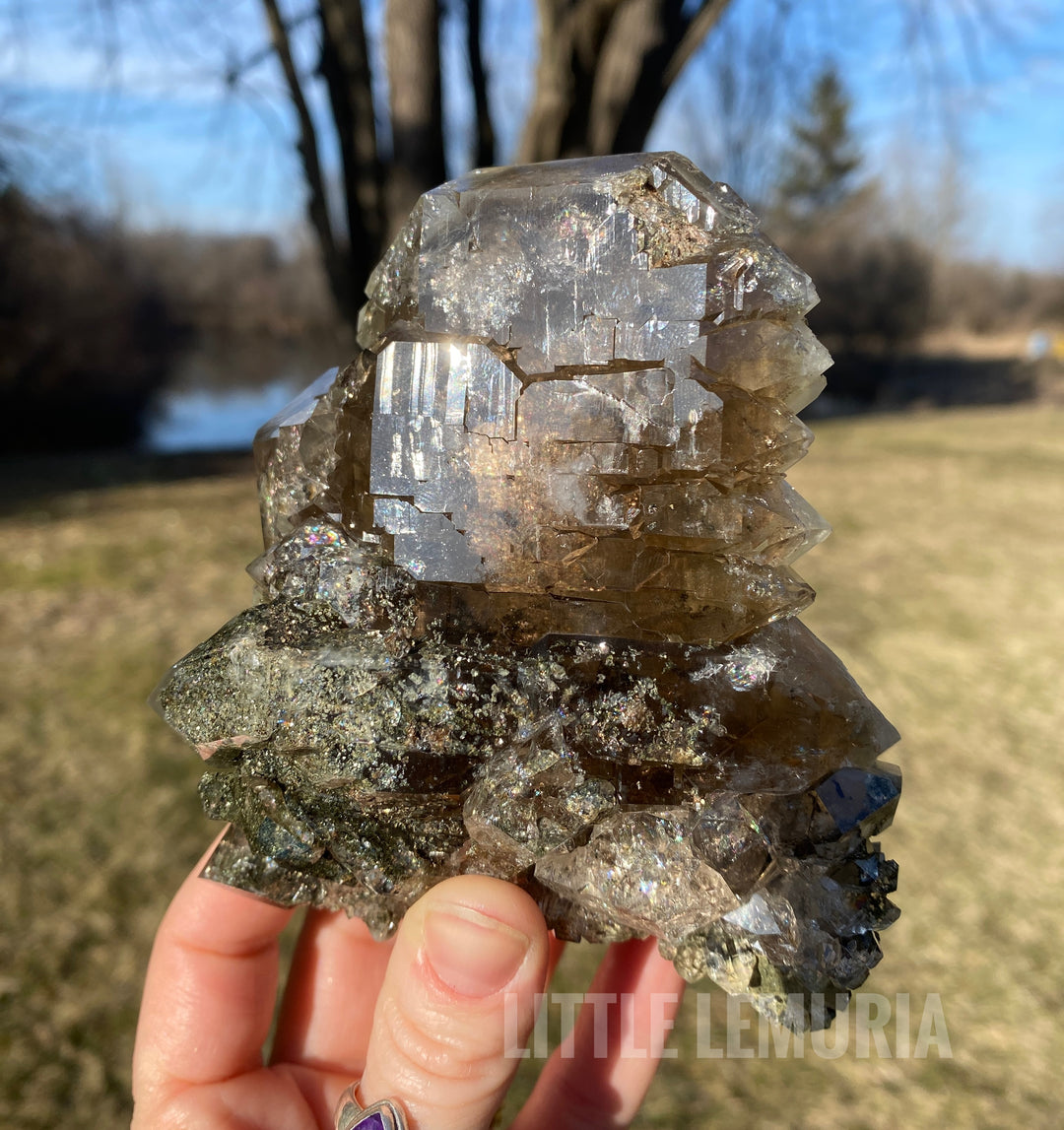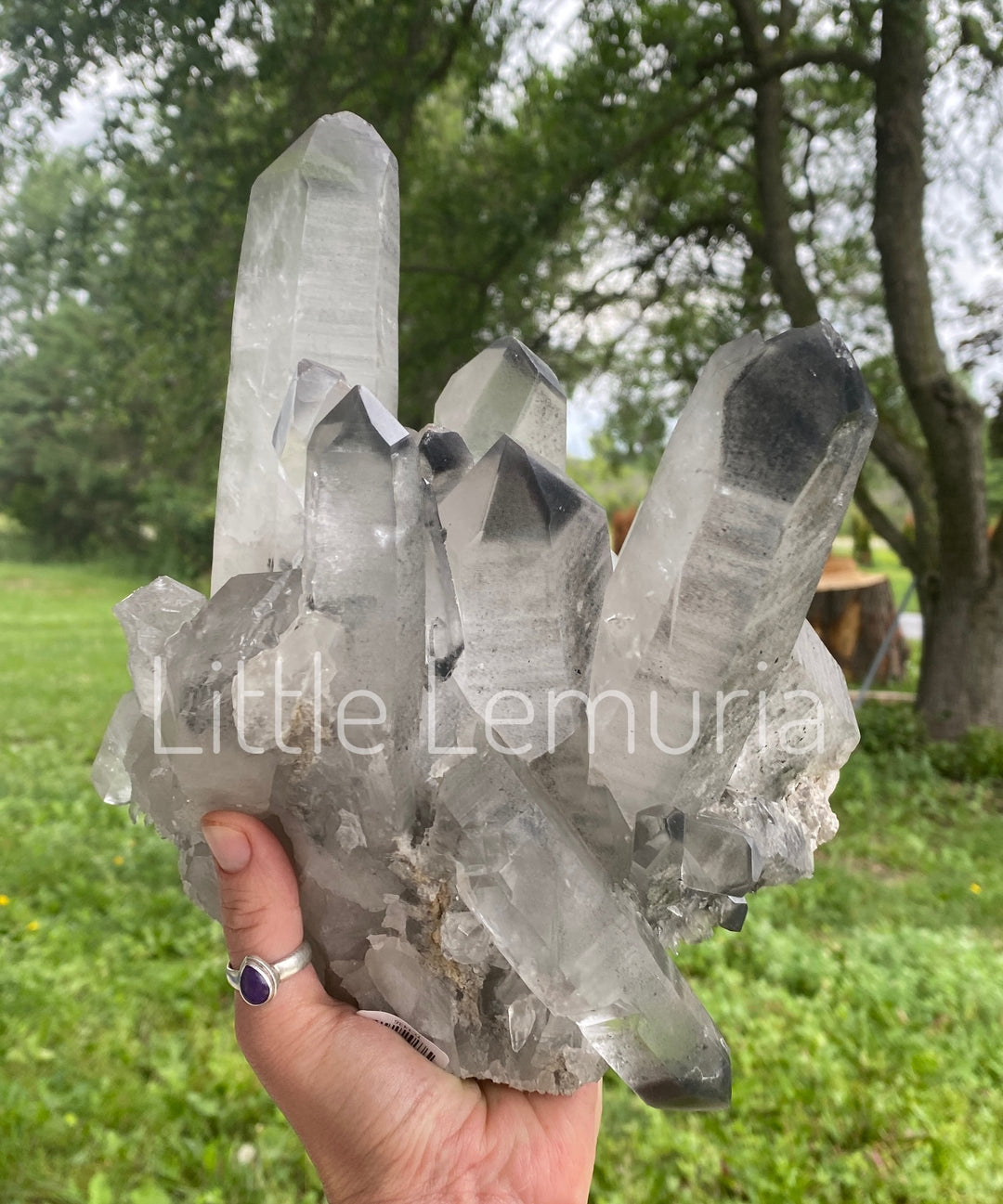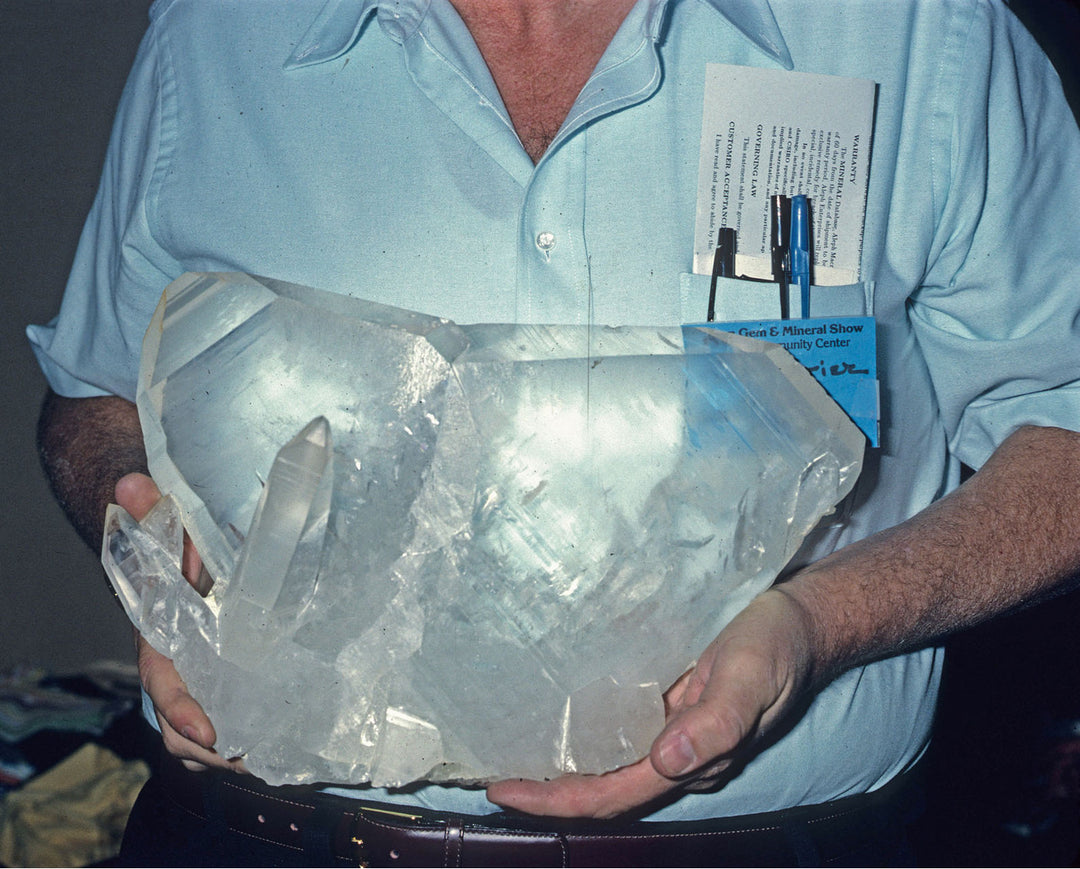A glimpse at crystal collecting on the Ganesh Himāl sub-range of the Himalayas.
There is a spectacular sub-range of the Himalayas that deserves a bit of attention on the blog. We have had the pleasure of curating a collection of stones from this locality only twice, and each time it has been a blessing. The place we will be discovering today is the Ganesh Himāl range, or in Nepali गणेश हिमाल

The elevation of this range soars highest at Yangra peak (also known as Ganesh I) which stretches 24,350 ft into the heavens. Other peaks in this range include Ganesh II, Ganesh III (Salasungo), Ganesh IV (Pabil)…you get the idea. Its not surprising that this sub-range gets its name from a single mountain that looks to take the form of an elephant, trunk and all.

It has been our own experience that only Nepalese vendors, who also tend to be strahlers, sell this material that they have hand collected themselves. If “strahler” is a foreign word to you, it means a mineral collector specializing in finding minerals in mountain environments. Although the name comes from Alps, the Himalayan range has borrowed many terms. A more suitable term in this case could also be a Sherpa. A Sherpa is specifically “a member of a Himalayan people living on the borders of Nepal and Tibet, renowned for their skill in mountaineering,” according to the Oxford dictionary. There are no major mining operations digging quartz in Ganesh Himāl. Only what a Sherpa can carry on his back can be mined in one day. It takes 3 days to descend Ganesh to the nearest village with a backpack full of stones.

Thomas Jefferson said "with great risk comes great reward" and that's certainly true in the case of the Sherpa. Cardio-pulmonary dysfunction and chronic high-altitude sickness are among the long-term concerns, but daily hazards of falling into open mine pits, unpredictable weather, uncharted routes, and other mountaineer dangers are what these diggers face every day of their short mining season. Every Himalayan crystal we sell in our shop has come directly off the mountain and passed through only the diggers hands and our own. Additionally, we prefer to clean them ourselves without the use of chemicals. The stones are treated as sacred, holding all the energy of these passionate gem trackers within them.

It is customary in Nepal to first offer the crystals from the season to the Shamanic Healer in the village. The shamans in this area of Nepal near Tibet are called Bönpo in Tamang language. They believe the crystals to be the “Eyes of God” and contain wisdom from past Shamans and Buddhists. The pieces we currently have in stock are from near Tipling Village which was devastated in 2015 by an earthquake. This little spot is the most remote village in the Dhading District and is a fusion of Hinduism, Buddhism, Shamanism, and Tantrism. Up until 2017 the nearest road was 2 days walking distance, but today they can walk to the nearest road in only 4 hours. The crystals in our stock were mined in 2017, the first year they could feasibly move the stones out by vehicle.

All our Nepali quartz crystals, in the words of the seller, come from “fair trade mindful mining by villagers in the Himalayan region”. We are grateful for the opportunity to support this ancient and sacred mining tradition. Find our selection of Himalayan Quartz HERE.






